Zuclopenthixol
- CAS NO.:53772-83-1
- Empirical Formula: C22H25ClN2OS
- Molecular Weight: 400.96
- MDL number: MFCD00867744
- EINECS: 258-758-5
- SAFETY DATA SHEET (SDS)
- Update Date: 2024-11-19 20:33:22

What is Zuclopenthixol?
Absorption
Upon reaching the body water phase, the decanoate ester is slowly released from the oil depot, which is resultantly hydrolyzed to the active substance, zuclopenthixol. The decanoate ester provides a means of slow release since zuclopenthixol itself is a short-acting drug.
Toxicity
Although there have not been any cases of overdosage reported, the symptoms are likely to be somnolence, coma, extrapyramidal symptoms, convulsions, hypotension, shock, or hyper- or hypothermia.
Neuroleptic malignant syndrome may occur. Zuclopenthixol may potentiate anticholinergic effects of concurrent medications. Zuclopenthixol has a demonstrated antiemetic effect in animals, and may mask signs of toxicity due to other drug overdoses, or may mask symptoms of disease.
Description
Zuclopenthixol is a kind of antipsychotic agent. It is a thioxanthene-based neuroleptic with in vivo action similar to the phenothiazine antipsychotics through antagonizing D1 and D2 dopamine receptors. It has three major formulations form including zuclopenthixol decanoate, zuclopenthixol acetate, and zuclopenthixol dihydrochloride. It can be used for the treatment of schizophrenia and bipolar mania. Besides antagonizing the D1 and D2 dopamine receptors, Zuclopenthixol can also take effect through antagonizing alpha1-adrenergic and 5-HT2 receptors. It can also weakly block the histamine H1 receptor.
Description
Zuclopenthixol is a dopamine receptor antagonist (Kis = 9.8 and 1.5 nM for D1 and D2 receptors, respectively). It also binds to serotonin (5-HT) receptor subtypes 5-HT2 and 5-HT6, α1-adrenergic, and histamine receptors (Kis = 7.6, 3, 33, and 169 nM, respectively) but not α2-adrenergic receptors (Ki = >4,300 nM). Zuclopenthixol inhibits dopamine-induced accumulation of cAMP in rat striatal homogenates (IC50 = 330 nM; Ki = 16 nM). It decreases stereotypic behavior induced by methylphenidate in mice (ED50 = 0.8 μmol/kg) and by apomorphine in rats and dogs (ED50s = 6.0 and 1.3 μmol/kg, respectively). Zuclopenthixol (0.7 and 1.4 mg/kg, i.p.) administered prior to testing enhances memory retrieval in rats in an inhibitory avoidance task without affecting locomotor activity.
Chemical properties
Pale Yellow Low Melting Solid
The Uses of Zuclopenthixol
The cis(Z)-form of Clopenthixol. Thioxanthene neuroleptic. Antipsychotic.
The Uses of Zuclopenthixol
The labelled cis(Z)-form of Clopenthixol. Thioxanthene neuroleptic. Antipsychotic.
The Uses of Zuclopenthixol
Zuclopenthixol is an anti-psychotic drug. It is an inhibitor of coxsackievirus B3. Also, it is an intermediate used in the synthesis of Zuclopenthixol Decanoate (Z701490), which is used in the maintenance treatment of chronic schizophrenic patients. It is one of the three distinct formulations of Zuclopenthixol namely, zuclopenthixol dihydrochloride, zuclopenthixol acetate or Acuphase and zuclopenthixol decanoate.
Indications
Used in the management of acute psychoses such as mania or schizophrenia. However, the use of zuclopenthixol acetate in psychiatric emergencies as an alternative to standard treatments (haloperidol, clotiapine, etc.) should be cautioned, since well executed and documented trials of zuclopenthixol acetate for this use have yet to be conducted. Zuclopenthixol acetate is not intended for long-term use.
Background
Zuclopenthixol, also known as Zuclopentixol or Zuclopenthixolum, is an antipsychotic agent. Zuclopenthixol is a thioxanthene-based neuroleptic with therapeutic actions similar to the phenothiazine antipsychotics. It is an antagonist at D1 and D2 dopamine receptors. Major brands of zuclopenthixol are Cisordinol, Acuphase, and Clopixol. This drug is a liquid. This compound belongs to the thioxanthenes. These are organic polycyclic compounds containing a thioxanthene moiety, which is an aromatic tricycle derived from xanthene by replacing the oxygen atom with a sulfur atom. Known drug targets of zuclopenthixol include 5-hydroxytryptamine receptor 2A, D(1B) dopamine receptor, D(2) dopamine receptor, D(1A) dopamine receptor, and alpha-1A adrenergic receptor. It is known that zuclopenthixol is metabolized by Cytochrome P450 2D6. Zuclopenthixol was approved for use in Canada in 2011, but is not approved for use in the United States.
Definition
ChEBI: The (Z)-isomer of clopenthixol.
Pharmacokinetics
Zuclopenthixol is a thioxanthene with therapeutic actions similar to the phenothiazine antipsychotics. It is an antagonist at D1 and D2 dopamine receptors.
Clinical Use
Antipsychotic for schizophrenia and other psychoses
Drug interactions
Potentially hazardous interactions with other drugs
Anaesthetics: enhanced hypotensive effects.
Analgesics: increased risk of convulsions with
tramadol; enhanced hypotensive and sedative
effects with opioids; increased risk of ventricular
arrhythmias with methadone.
Anti-arrhythmics: increased risk of ventricular
arrhythmias with anti-arrhythmics that prolong
the QT interval - avoid with amiodarone and
disopyramide.
Antibacterials: increased risk of ventricular
arrhythmias with moxifloxacin and parenteral
erythromycin - avoid
Antidepressants: increased level of tricyclics; possible
increased risk of convulsions with vortioxetine.
Antiepileptics: anticonvulsant effect antagonised.
Antimalarials: avoid concomitant use with
artemether/lumefantrine.
Antipsychotics: avoid concomitant use of clozapine
with depot preparations in case of neutropenia;
possible increased risk of ventricular arrhythmias
with risperidone.
Antivirals: concentration possibly increased with
ritonavir.
Atomoxetine: increased risk of ventricular
arrhythmias.
Anxiolytics and hypnotics: increased sedative effects.
Beta-blockers: increased risk of ventricular
arrhythmias with sotalol - avoid.
Cytotoxics: increased risk of ventricular arrhythmias
with vandetanib - avoid; increased risk of ventricular
arrhythmias with arsenic trioxide.
Metabolism
Metabolism of zuclopenthixol is by sulphoxidation, sidechain N-dealkylation and glucuronic acid conjugation.
The sulphoxide metabolites are mainly excreted in the
urine while unchanged drug and the dealkylated form
tend to be excreted in the faeces.
Metabolism
The metabolism of zuclopenthixol is mainly by sulphoxidation, side chain N-dealkylation and glucuronic acid conjugation. The metabolites are devoid of pharmacological activity.
References
https://www.drugbank.ca/drugs/DB01624
https://en.wikipedia.org/wiki/Tiabendazole
Properties of Zuclopenthixol
| Melting point: | 56-60°C |
| Boiling point: | 577.4±50.0 °C(Predicted) |
| Density | 1.289±0.06 g/cm3(Predicted) |
| storage temp. | -20°C Freezer, Under Inert Atmosphere |
| solubility | Chloroform (Slightly), Methanol (Slightly) |
| form | Solid |
| pka | 14.96±0.10(Predicted) |
| color | White to Off-White |
| CAS DataBase Reference | 53772-83-1 |
Safety information for Zuclopenthixol
Computed Descriptors for Zuclopenthixol
New Products
Tert-butyl bis(2-chloroethyl)carbamate (S)-3-Aminobutanenitrile hydrochloride N-Boc-D-alaninol N-BOC-D/L-ALANINOL N-octanoyl benzotriazole 4-Hydrazinobenzoic acid 3,4-Dibenzyloxybenzaldehyde 1,1’-CARBONYLDIIMIDAZOLE R-2-BENZYLOXY PROPIONIC ACID 1,1’-CARBONYLDI (1,2-4 TRIAZOLE) 4-HYDROXY BENZYL ALCOHOL 3-NITRO-2-METHYL ANILINE (2-Hydroxyphenyl)acetonitrile 4-Bromopyrazole 5-BROMO-2CYANO PYRIDINE 5,6-Dimethoxyindanone 5-broMo-2-chloro-N-cyclopentylpyriMidin-4-aMine 4-methoxy-3,5-dinitropyridine 2-(Cyanocyclohexyl)acetic acid 2-aminopropyl benzoate hydrochloride 1-(4-(aminomethyl)benzyl)urea hydrochloride tert-butyl 4- (ureidomethyl)benzylcarbamate diethyl 2-(2-((tertbutoxycarbonyl)amino) ethyl)malonate Ethyl-2-chloro((4-methoxyphenyl)hydrazono)acetateRelated products of tetrahydrofuran
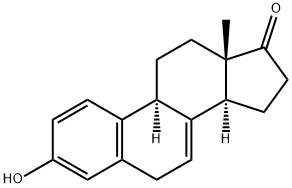
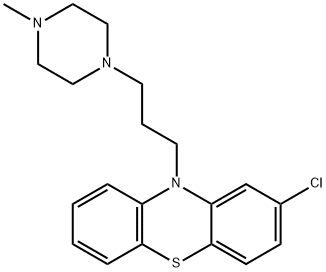
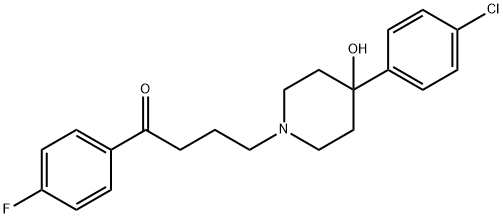



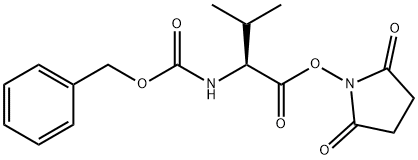
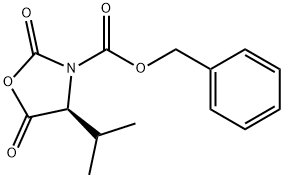
You may like
-
 873-83-6 6-Aminouracil (or) 4-Amino-2,6- dihydroxypyrimidine, (or) 6-Amino2,4-pyrimidinediol 99%View Details
873-83-6 6-Aminouracil (or) 4-Amino-2,6- dihydroxypyrimidine, (or) 6-Amino2,4-pyrimidinediol 99%View Details
873-83-6 -
 55441-95-7 99%View Details
55441-95-7 99%View Details
55441-95-7 -
 N-Vinylformamide 99%View Details
N-Vinylformamide 99%View Details
13162-05-5 -
 Chloro Uracil 1820-81-1 99%View Details
Chloro Uracil 1820-81-1 99%View Details
1820-81-1 -
 207557-35-5 99%View Details
207557-35-5 99%View Details
207557-35-5 -
 2-ethyl-6-methyl-3-hydroxypyridine succinate 99%View Details
2-ethyl-6-methyl-3-hydroxypyridine succinate 99%View Details
127464-43-1 -
 2-ETHYLPYRIDINE 100-71-0 99%View Details
2-ETHYLPYRIDINE 100-71-0 99%View Details
100-71-0 -
 181228-33-1 (S)-Methyl 3-amino-2-((tert-butoxycarbonyl)amino)propanote Hydrochloride (DAP-OMe. HCl) 99%View Details
181228-33-1 (S)-Methyl 3-amino-2-((tert-butoxycarbonyl)amino)propanote Hydrochloride (DAP-OMe. HCl) 99%View Details
181228-33-1